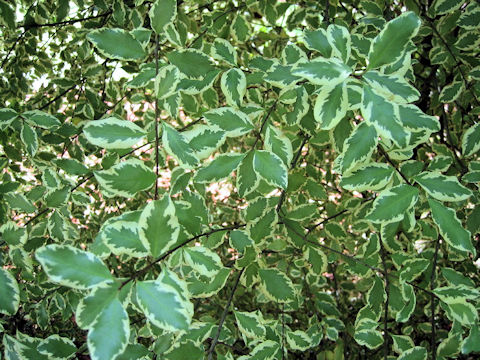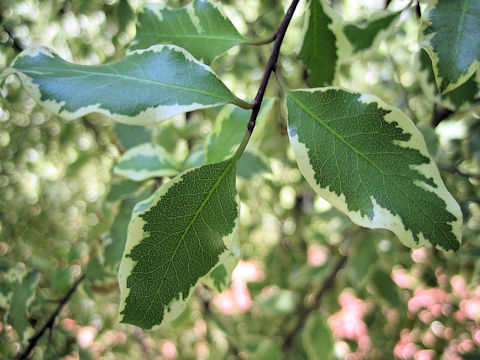
|
The Kohukohu (Pittosporum tenuifolium) belongs to the family Pittosporaceae. It is a small evergreen tree that is endemic to New Zealand. It grows in coastal to montane scrub and forests and grows 4 to 10 m tall. It is dioecious. The trunk is stout and covered with dark grayish black or brown bark. Branches are numerous, erect and then spreading. The leaves are oblong to oblong-ovate, alternate, leathery, with a light to dark green surface and entire margins. It produces dark red to black flowers from October to November. The fruit is a subglobose capsule with two lobes when mature. The resin or oil extracted from the leaves has long been used by the native Maori for aromatic purposes and in baptismal ceremonies. Today, it is a popular horticultural plant and is used for hedges. In Japanese, it is called "Kuroha-tobera". The photos show the spotted horticultural variety 'Variegatum'.
|

